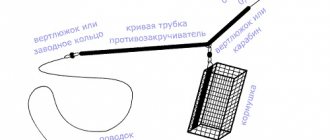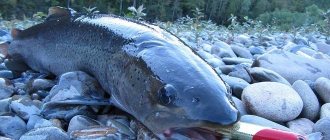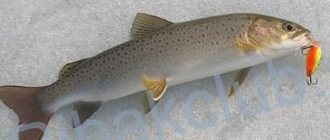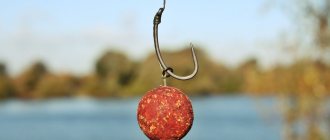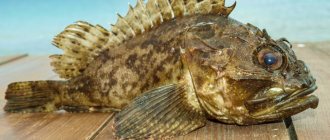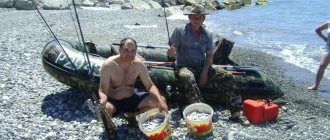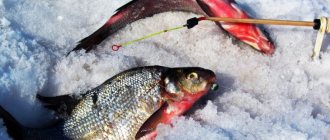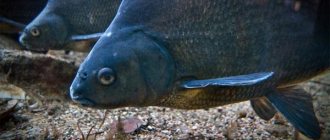This article covers the following issues of winter fishing: equipment and equipment, going out on the ice and safety precautions, tackle and fishing method for beginners. If you are specifically interested in the process of winter fishing, a separate story is devoted to this: “Fishing from ice: methods, techniques and tactics” (approx. Dr. Riboedoff).
I was “inspired” by an acquaintance to write an article about winter fishing. He is obsessed with summer fishing and has good results in this field. But if you start talking about winter fishing in front of him, he wrinkles his nose and grumbles: “I don’t understand you, “penguins.” Sitting in the cold means freezing your snot. How to tinker with the bait, with the fish? This is masochism. Maniacs, perverts! A normal person sits at home in winter and drinks vodka.”
Briefly about what this “footcloth” is dedicated to: it was written as if “in contrast” to the words of my friend. But in it I will not only give arguments in favor of the fact that winter fishing, despite the extreme, is within the capabilities of an ordinary person and can bring great pleasure. I will briefly describe the technology of winter fishing and mention useful developments designed to simplify and facilitate the process itself - including those that my friends and I ourselves “figured out” (pay attention to the blue “advice” blocks and what is highlighted in them in bold font). Therefore, this article can be considered a guide to action. And it is especially addressed to those who are taking their first steps in winter fishing.
Pros and cons of winter fishing over summer
Winter fishing is a natural continuation of summer fishing. But which one is better? The question, I think, is incorrect. Both have their pros and cons. Both have something of their own, unique.
pros
- The main advantage of winter fishing over summer fishing is the ability to quickly change the place of fishing and fish in places where you can only get to the open water from a boat. And in winter you can walk to any point in the reservoir. Simply put, the fisherman is not limited in his choice of place.
- Winter gear is very compact. They take up less space than summer ones and are easier to fish with. Winter gear has better feedback.
- During winter fishing, it becomes possible to fully use the fascinating, reelless method of fishing.
- In winter you can catch burbot, which in summer does not bite in ordinary reservoirs. And other fish, such as whitefish or smelt, active in cold water.
Minuses
- The main disadvantage is the minus in Celsius (pardon the pun). This is what scares off inexperienced fishermen. At winter temperatures, fishing turns into a little hard labor: your hands are cold, your fingers don’t obey, the water in the holes freezes and freezes on the fishing line. This makes it difficult to control the gear and the sensations are unpleasant. But - at the very beginning. Everyone who takes the first step on the ice quickly develops the skill of overcoming the cold: their hands get used to low temperatures, and their heads figure out how to keep their fingers less cold and move the tackle more deftly. But for experienced fishermen, a winter minus is not a minus (once again, I apologize for the pun).
- Many fish become capricious in winter. At the height of the season - in the middle of nowhere - they lose interest in the bait. But this makes the fishing itself more interesting. The fisherman has to use tricks to “persuade” the fish to bite. And it’s clear that for experienced fishermen there is no dead winter - they have a catch throughout the entire freeze-up period.
- In winter there are more small fish in the catches than in summer. But it depends on who. Experienced fishermen carry large fish even in winter.
- Some fish, for example - carp, tench, crucian carp, catfish - stop biting in winter and go into hibernation. This is probably the only disadvantage of winter fishing over summer fishing, which cannot be overcome either by tricks or experience. But there are rare bodies of water where you can successfully catch crucian carp in winter.
- Winter fishing, unlike summer fishing (for which you just need to take a fishing rod, a can of worms and a bag for the fish), requires the fisherman to acquire a bunch of equipment and equipment. Minimum set (except for gear and attachments): ice auger, shabalka, box, set of warm clothes. Often this list is supplemented by a tent and a means of heating it. But this belongings makes winter fishing accessible to many. And recently, thanks to the advanced industry, this availability has seriously expanded.
In the mid-2000s, on the Verkhnemakarovsky Reservoir, in a crowd of “penguins,” my friend and I saw a girl catching ruffs with perches. It was an event! And now on the ice I almost always see females. Which speaks volumes about the fact that winter fishing can be done by anyone.
As you can see, the devil is not as scary as he is painted.
Where should you start winter fishing?
As with any type of fishing, of course from a store. You will need warm and at the same time light things. Fortunately, there is now plenty of this goodness. When choosing shoes, you should take into account the fact that even in the middle of winter there may be water on the ice. For this reason, it is better to take shoes that are not waterproof. When choosing gloves or mittens, you need to take into account that if you fish in gloves (mittens), it will not be convenient for you to pull the line out of the hole in them when biting.
Therefore, gloves should be removed easily and quickly. I fish in warm tops. He waved his hand and the top flew off. In general, I prefer to fish while sitting in a tent. It’s warm, the wind doesn’t tangle the line and no one sees anything. When the frost is not very severe, I heat the tent with candles. I put one, two, or three candles, depending on the ambient temperature. If it's very cold, I use gas. It is better to buy winter gas, it freezes less and burns better.
Preparing for winter fishing
For the first time on the ice, you need to prepare carefully - without skimping on funds. And in advance - from the beginning of autumn.
Clothes and shoes
Usually, fishing from ice does not involve active muscle work, so you will have to be thoroughly insulated. Here is a proven concept of winter fisherman's clothing:
- Underwear thermal underwear . It removes moisture from the skin, preventing rapid heat loss, but as insulation it is so-so. You can use two sets - a thin summer set - for positive weather and slight cold snaps, and a thick winter set - for severe frosts.
- A sweater with a good neckline (fleece is in fashion now). Same function + specific insulation. When there is a thaw, it may be unnecessary.
- Winter fishing suit of the “overalls + jacket with a hood” system OR a budget set: an old down jacket + insulated overalls.
It's the overalls ! Firstly, it provides an additional barrier from the cold for the torso, and secondly, the problem of a blown lower back, which is relevant when wearing trousers, is completely solved. A hood on the jacket is also required.
- Scarf (optional). No matter how necessary it is if the sweater has a good warm collar. But a scarf can be useful in severe bad weather with wind and frost - it can protect your mug from the cold.
- Knitted hat.
Keeping your feet warm during winter fishing:
- Regular socks , but better special ones - “thermal underwear”.
- Warm wool socks .
- Modern winter fishing boots made of porous rubber with liners OR a budget option - felt boots in high rubber galoshes or chemical protection shoe covers
In stores you can see shoe covers for fishermen - galoshes with rubberized tops, inside of which there are chuni inserts. There is a variety of these shoes for hunters, where the tops are made of Oxford bag shoes. I once bought these inexpensively (hunting ones), took out the inserts and inserted felt boots. I went fishing in these shoes for about 10 years and didn’t blow my socks off. True, the sole there was a bit slippery, although it was studded - due to the sparse terrain. In the city and towns, you had to walk carefully on ice or compressed snow. But now there are shoe covers on sale that are free of this drawback. Someone will ask - why “collective farms”? There are winter fishing boots - they are cheaper than shoe covers and felt boots. And it’s easier, that’s for sure. My answer: felt boots are much warmer . No matter what the boot manufacturer writes on the box! Verified.
Hands are also warm:
- Special mittens-gloves for winter fisherman (I didn’t like them), OR just fur, cotton, synthetic padding, or fleece mittens , OR
Our two-layer system for protecting hands from the cold : thicker work gloves, converted into semi-gloves (cut off all excess and hem them) + mittens on top. This set allows you to deftly handle gear. The half-glove prevents the hand taken out of the mitten from quickly freezing.
Everything is sold in any normal fishing store. It’s worth checking out a workwear store—they’ll probably have clothes for working in the cold.
Equipment
I’ll start listing winter fisherman’s equipment with what allows you to retain or radiate heat.
- Tent . Protection from wind, snow, frost. The best means of preventing holes from freezing and darkening them. There are different types of tents for winter fisherman; choosing them is a separate issue.
- Heater . Allows you to create a comfortable temperature in the tent or enough so that the holes do not freeze. We have a separate article dedicated to tent heaters.
- Thermos - for hot tea. It’s not always worth taking a tent with you, but you should have a thermos with tea. It also warms up well and complements the fishing process with pleasant moments.
Next - equipment that is directly related to the process of winter fishing:
- Ice screw . Choosing it is a separate topic, but to begin with it is better to take simpler and cheaper ones - with straight (not spherical) knives - which are easier to sharpen, diameter - about 150. Used for drilling holes. By the way, this can be a good way to warm up.
You can also tie a tent to an ice auger by first drilling it half-thick into the ice. Just make sure there is no water (it will freeze!) and, if possible, it is better to scoop out all the ice chips from the hole.
- Shabalka . The most required item! It is convenient to place a fishing rod on its handle. She can also remove dumplings from the pan. Some enthusiasts use it to scrape ice chips out of the hole after drilling.
- Hook . Magic thing! If you take it with you, you will catch small things throughout your fishing trip. If you forget it at home, a large fish will definitely bite and break the fishing line.
- Fisherman's box . It stores gear, a thermos and a supply of food, and is equipped with a window for storing fish. Well, and most importantly, sitting on it, the fisherman casts a spell over the hole.
- A rag tucked into the top of a boot. Needed to give signals to low-flying aircraft. Some enthusiasts wipe their hands of fish mucus.
Why is a crate better than a high chair? You can store all your junk in your backpack and sit on a folding camp stool. But the box protects the butt well from the piercing wind and reduces heat loss.
Tackle
The first thing I advise is to buy a universal winter fishing rod with a “handle and reel” system. They can be used to fish with a jig with a nozzle, with a simple float tackle, try to “reel without reeling”, or use small spoons and balancers. Just the thing for mastering the process of winter fishing.
The fishing rod is equipped with a nod, for starters - a purchased one. It doesn’t matter what it’s made of, the main thing is that it’s flexible and elastic enough—it doesn’t hang “like snot” under the weight of the bait, but it doesn’t remain almost straight, but bends by 45 degrees. You’ll have to purchase several options and select and adjust.
The picture above shows a fishing rod with a homemade nod made from a plastic card and a piece of nipple rubber. It is convenient to attach such a nod (as well as one made entirely from a nipple) with an alligator clip attached to the tip of the whip, purchased from electrical goods.
A 0.1 mm fishing line is wound onto the reel. The fishing line is threaded through the hole where the nod is attached to the whip and through the ring at the tip of the nod, and a jig is tied to the end of it; a simple “pellet” is enough to start with. It doesn’t matter what it is made of - lead or tungsten. How to tie a jig is described in detail here.
The fishing rod is almost always equipped with legs that fit tightly onto the whip. them with an advanced clothespin with a spring - it holds much stronger and can be attached anywhere on the whip - you can change its angle and the tension of the nod.
Be sure to have spare jigs, at least three of them.
Other accessories
Sometimes the fish swallows the bait deeply. Spiny ruffs are especially successful in this. Fiddling with them in the cold is another task. This is where an extractor - a small device that resembles a screwdriver.
Sometimes the jig gets caught on a snag. In order not to tear the line and not lose the bait, it is better to use a cut-off .
Fish can be fed directly from the hole. But when the depth at the fishing spot is 3 meters or more, it is better to do it with a feeder . Otherwise the bait will be carried away by the current, or it will scatter too much.
To deliver the release or feeder, use a reel with a nylon cord and a carabiner at the end. It is not recommended to use fishing line - it springs . Instead of a reel, you can take a winter fishing rod with an open reel without a whip (I had a broken one in which the whip could not be attached - it turned out to be very convenient). It is better to “mark” the cord with figure-eight knots every meter - then during feeding it will be possible to accurately measure the depth.
For the nozzle you need a bloodworm . A budget (and disposable) option is a matchbox. Insulated - foam box. Universal - made of birch bark.
Winter fishing: tips from experienced people
As soon as the real cold sets in in winter, amateur fishermen are delighted - perhaps the most productive season begins. For those who have recently fallen in love with hiking for winter fish, there are some practical tips. • If, after drilling a hole in an unfamiliar place, you see gas bubbles coming out of it, move to another place. You won't get any fish here. • When searching for fish in an undammed “living” river, where schools of fish usually have a permanent “place of residence”, you can hit the ice in a suitable place, in your opinion, with the strong handle of an pick or other strong piece of wood. A disturbed fish will instantly rise to the surface of the ice and immediately disappear into the depths. This advice is acceptable for fishing on the first, still transparent ice. • Power plants and mills located on small local reservoirs usually do not work on weekends, storing water. At the same time, its level increases, and the fish bite stops. Fishing secrets • It can be difficult to attach a hook to a tough, thick fishing line. The solution is simple - the ends of such fishing lines or leashes should be soaked before tying the hooks. As for the knots at which the fishing line most often breaks, it is better to tighten them by lowering them into the water. This will add strength to them. • Cleaning perches is always a hassle. In winter, things can be simplified if fish covered with an ice crust brought from a reservoir are placed in a bowl with cold water for 30 minutes. During this time, the crust melts, and a strong fish ready for cleaning is at your service. • In remote reservoirs, it is useless to feed fish with semolina, crackers, cereals and grain. • They say that if you put two bloodworms on a hook and cut the tail of one of them, the fish will bite better.
Fishing suit
The generally accepted “fishing” clothing - felt boots, short fur coat, wadded trousers - is not suitable for a long trip to a pond - it is heavy and cumbersome. How to be? I want to go fishing! There is a solution: • You can adjust your hiking boots to be 2-3 numbers larger than usual, providing them with a thick felt insole. Wear 3 pairs of tall wool socks, layering each layer with newsprint. And on top are rubberized fishing shoe covers, under which you can also tuck newspaper. • It is more useful to wear several pairs of underwear (not synthetic) on the body - this creates additional layers of air, and therefore keeps the clothes warm longer. On top is a suit with any insulation, for example padding polyester. • Your head should never sweat, so choose a hat that is suitable for your hike.
Fishing rods for winter fishing
Now about the fishing rods. For such “cold” fishing, no more than two of them will be required for each angler. One, smaller, for fishing with a jig or with a float, the second - for vertical trolling. Fishing rods with a reel built into the handle are quite convenient. They are only bad in very cold weather, when the wet fishing line begins to freeze.
Fishing gear for winter fishing A heavy fishing box is not very appropriate on a hike.
It’s better to get by with a small backpack - for gear, and for sitting (especially, however, you shouldn’t sit) a folding chair will do. Among other things necessary, several more accessories can be mentioned: • a ladle for cleaning the holes; • a small hook in case of catching a large fish; • foam or wooden boxes in which you will store the nozzle; • capacity for spare lines, hooks, sinkers, jigs, nods and floats. An absolutely necessary thing is a brace. Ice picks of various designs are still used today. This is an indispensable tool for testing the strength of ice.
Food for winter fishing
Oh, how nice it is to sit in the middle of a snowy desert of a frozen pond, eat a sandwich with tea, admiring the powdered coastal pines, frosty reeds and the winter sky covered with cirrus clouds. But the fish, the infection, as luck would have it, begins to bite at this very moment.
A supply of food for winter fishing is no less important than warm clothes and shoes. Firstly, this is another heating method. Secondly, it is a necessary source of replenishment of proteins, fats and carbohydrates in extreme conditions.
Previously, I didn’t take a steam bath and took with me on fishing, except for a thermos with tea: sliced bread and sausage, boiled eggs, boiled potatoes. But over time, I realized that it was better to have not only hot tea with me, but also heated food, and I got a soup thermos (with a wide neck). It became a reliable storage for boiled sausages, hot porridge with meat, and boiled potatoes. And even dumplings, richly flavored with butter.
It is very good if your tent heater has a cooking function, or if you use a primus or gas stove instead. You can cook something with them, for example, cook the same dumplings. Or you can have fish soup - if you have a catch.
Equipment for winter fishing
The working properties of the ice drill depend on the sharpness of the knives. Therefore, they must be handled with care. Transport them in a special case, try to avoid accidental impacts on the ice. Then the ice drill knives will not become dull prematurely and will serve the entire season without additional sharpening.
On the way to fishing, an open ice pick can injure someone or become dull. Therefore, for transportation, you should put a piece of rubber hose on the tip or wrap it with canvas.
When fishing, it is better to use special gloves with open fingers. To prevent your fingers and hands from cracking in the cold, you need to lubricate them periodically with sunflower oil.
Safety
The main enemies of the winter fisherman:
Unstable ice
It happens: in the first ice - when it is still thin, and in the last ice - when it is loose and corroded by spring water. There is only one way to protect yourself: if you’re not sure, don’t interfere . It’s better to sit out at home for a day or two than to fail.
But if you suddenly happen to find yourself on a body of water at a dangerous time, you should behave extremely carefully. Don't wander around on the ice without anything to do. Leave the same way you came. Do not crowd with friends (recommended interval is 5 meters). Beware of places with marsh vegetation and algae - they freeze later than others. And constantly listen. Unstable ice usually “warns” the fisherman with a crash (but not always!). It’s worth taking special life preservers with you - they will help you get out of the ice hole if the ice suddenly breaks.
Recently, the industry has been producing waterproof winter suits for fishermen , designed to survive in icy water. Apparently, they are made according to the “drysuit” principle for extreme rafters, only much better insulated (not for deep winter, but for the first and last ice for sure). In common parlance, such costumes are called “floats.”
The optimal ice thickness is the width of your palm (more than 7 cm). You can definitely walk on this. But it should be taken into account that this thickness may also include a layer of loose, frozen snow. Its strength is worse than monolithic, transparent ice. And on the reservoir there may be places where the ice is thinner and it is already dangerous to be on it. In your spare time, I recommend reading the story “What is the difference between a photographer and a fisherman” - it describes how you can fail on such ice and what the sensations will be like afterwards.
Low temperature
Frostbite while fishing is not that uncommon.
The author of the article once almost got frostbite when he gave his mittens to a friend (who conveniently forgot his in the car) and put on rag gloves instead. No, everything was fine while fishing - my hands were successfully hidden in my pockets and warmed up. But when we had to go from the reservoir to the parking lot, a strong, strong wind blew, and we also had to drag the ice auger in our hands. When they arrived at the place, the fingers turned white and became stone. I had to frantically wave my arms, put them under my T-shirt and warm them against my belly. Then there was a wild pain in my thawing fingers, but we managed to do without consequences - everything was done on time.
Usually a person, if his fingers are cold, begins to furiously rub his palms against each other, apparently trying to produce heat through the force of friction. Some people rub snow on their palms. All these methods are nonsense, the most effective is warming exercises. It is performed simply: we quickly wave with outstretched arms. Thanks to centrifugal force, blood begins to rush to the extremities and brings warmth. Hands warm up quickly. This way you can warm up your feet (be careful not to fall!), but it’s better to go for a run - the effect will be stronger.
Some of my friends easily got frostbitten during the active fish bite, when there was simply no time to put on a mitten.
Warming your hands on your belly or putting them in your mouth is not the best way. It is recommended to have with you: a catalytic heating pad (expensive, but the hottest), or a small salt heating pad (sold in a pharmacy), or a chemical heating pad (sold in tourist and fishing stores in the form of insoles or stickers on the wrists; if you have the appropriate ingredients, you can make it and himself). A cheap and cheerful option is a homemade hand warmer made from a tin can. It is filled with coal and runs slowly (but you need to correctly calculate the holes in the body and lid to ensure maximum longevity).
I know examples when people took ordinary winter shoes for fishing and froze the tips of their toes.
Conclusion: do not neglect warming your limbs !
Alcohol
Perhaps the most insidious and most important enemy of the winter fisherman. And he acts in collusion with the previous one.
History knows many examples of people getting into trouble while drunk, getting severe frostbite, or even freezing to death.
There are amateurs who claim that it’s very possible on ice if you’re “careful.” Send them through the forest! I know from myself that even a small dose of alcohol negatively affects the control of tackle and the timeliness of hooking . Also, alcohol “interrupts” the whole buzz from interacting with nature.
It’s better later - after fishing, than during it.
Briefly about the ice fishing process
Where to begin? It is better to go to the first winter season lightly - with a minimum of belongings. No tent or heater. And always with experienced friends! They will help, if anything, and give practical advice. The best time for this adventure is a fine day on the first ice - when it has already completely risen and is holding a healthy man with gear.
You can buy raspberries at a fishing store. Breadcrumbs and semolina will be used for bait - they are available in any grocery store.
As a test reservoir, we choose some nearby one, where it is known for sure that there is ruff, sleeper, roach, or perch. These fish (especially rotan) are undemanding and can be caught using the simplest gear.
In the first ice, everything in nature is friendly to the fisherman: the weather is not as severe as it will become later, and the snow cover is thin, and everything that is covered with it along the banks looks very picturesque: all these powdered weeds, bushes, trees - tinted by the sun and the sky in orange-blue shades. And the chilly winter air is as clean and fresh as ever. Even a simple walk to a pond can now bring a lot of positive emotions and aesthetic pleasure.
We chose a place and drilled several holes. We threw half a handful of bait into each, waited a little, and then we put a bloodworm on the hook, unwind the fishing rod, and lower the jig to the very bottom. We stretch the line to slightly raise the bait. We lightly play with a nod, lifting the jig higher. And suddenly it sharply bent downwards. Bite! Let's hook - without a second's hesitation! At the other end of the line there is an unusual weight.
And now, from a dark, seemingly bottomless hole leading into complete uncertainty, the first fish was pulled out. Usually this is the ubiquitous perch. Greenish with black stripes, orange fins and a yellow eye - it seems especially beautiful against the background of white snow.
Did you know that in winter fish eat mainly animal food - worms and bugs that live at the bottom and in the water column? At this time, it is not bitter and does not taste like mud - like in the summer, the soup made from it is the best.
Spending time on winter fishing is in every way more pleasant and useful than filling the balls at home!
